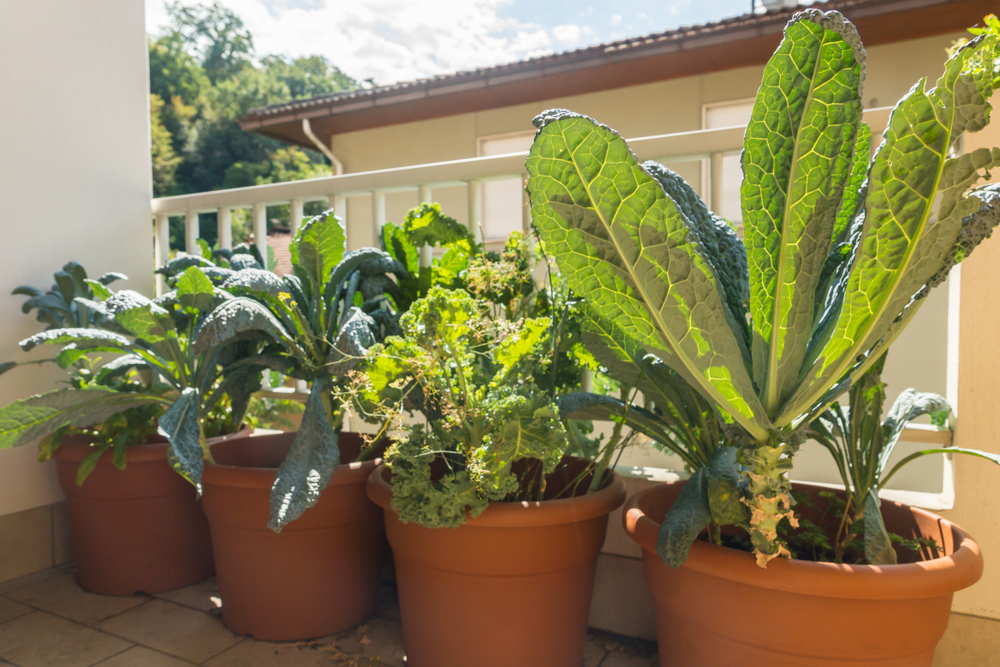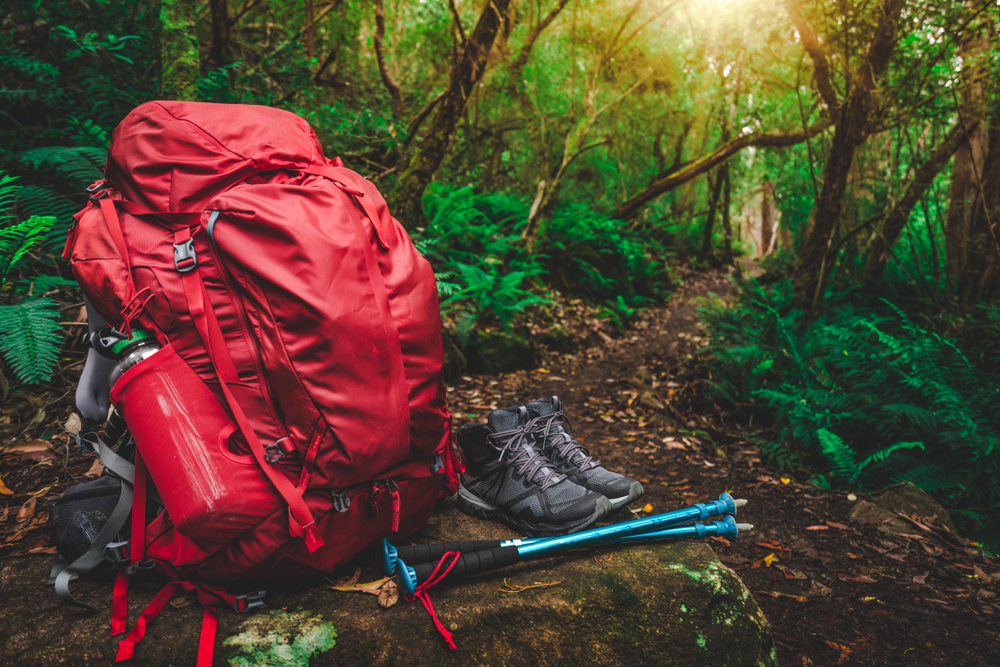Despite the widespread availability of fast food and other less than healthy options, teenagers can still find plenty of natural food to eat. Surprisingly, many foods can grow well on a student’s campus garden or even on their windowsill.
Ever wonder if your campus has the proper planting ground for all those wild plants you’ve been dreaming of? This article will walk you through nine popular natural foods that students can grow. Let’s dive in!
1. Kales
Kale is a leafy green vegetable. It belongs to the same family as cabbage, is available year-round, and grows well in cool weather. Kale is rich in Vitamin A, Vitamin C, calcium, iron, and potassium.
2. Spinach
Spinach is a popular leafy green vegetable with a mild flavor and soft texture when cooked. The plant thrives well in the cooler spring months and can be harvested from ground level and hanging baskets under indoor lights. Spinach contains high amounts of protein, dietary fiber, Vitamin A, Vitamin C, folate, magnesium, and manganese. It has been shown to help prevent neurodegenerative diseases.
3. Cherry Tomatoes
Although tomatoes grow best outdoors in hot, sunny climates, they can also be grown indoors under artificial lights. It takes about 3-4 weeks from seed germination until a tomato plant begins to produce fruit, so it is best to grow these plants in April or May. Cherry tomatoes are rich in lycopene, Vitamin C, niacin, and Vitamin A. They have been used as a treatment for acne and cancer.
4. Carrots
Carrots grow well outdoors during cool weather or indoors in containers with supplemental lighting that mimic sunlight. Because carrots are best raised by directly seeding the soil, it is essential to plant them before the last frost of spring. The root is sweetest when harvested at least one month after planting; carrots can also be stored fresh in moist sand until they are ready to be consumed. However, if kept too long without proper ventilation or air circulation, they may begin to sprout underground and become unusable. Carrots contain high amounts of folic acid, Vitamin A, and potassium. They have been used to treat infections and eye conditions.
5. Cucumbers
Cucumbers grow well in most climates, but they produce the best fruit in hot and sunny areas. The plant can grow up to 3 feet (1 meter) long and thrives when grown outdoors in loose soil during the summer months. Cucumbers are rich in Vitamin A, vitamin B6, calcium, folic acid, and dietary fiber. They have also been used as a natural diuretic and antiseptic.
6. Tomatillos
Tomatillos grow well in most climates and can be grown either indoors or outdoors. The plant produces fruit best when planted during April through September. Tomatillos are rich in vitamin C, niacin, Vitamin B6, potassium, and dietary fiber. They have been used to treat infections such as respiratory and urinary.
7. Potatoes
Potatoes grow well during the springtime or early summer months when temperatures range between 55°F and 75°F (13°C – 24°C). The plant needs loose soil to grow properly, so it will not develop if there isn’t enough room to spread out. Potatoes are rich in iron, Vitamin B6, potassium, Vitamin C, niacin, magnesium, and dietary fiber.
8. Bell Peppers
Bell peppers grow well during the summer months when temperatures range between 65°F and 85°F (18°C – 29°C). Although bell pepper plants can produce fruit in colder climates, they do not perform as well in these areas and will stop producing after a certain point. Bell peppers contain high amounts of Vitamin C, vitamin A, potassium, and dietary fiber. They have been used to treat various cancers.
9. Pineapples
Pineapple plants are available at most nurseries during springtime, but growing them indoors under artificial lights mimic sunlight. It takes about 6-12 months until pineapple begins to produce fruit after being planted, so it is recommended to start planting these plants in late summer/early fall. The plant may die around wintertime if grown outdoors because of frost damage. Pineapples contain high amounts of manganese, Vitamin B1, vitamin B5, Vitamin C, and dietary fiber.
How to grow your farm food as a student
While your friends may be complaining about how expensive it is to eat healthy as a student, you can grow your fruit and vegetables on the farm for cheap. For example, growing tomatoes is easy, and you really won’t struggle to find even one tomato seedling from a local farmer’s market.
Compared to some of those other fruits and vegetables you see on this list, that price is a steal – even if the plant does die during the wintertime. Though not very common, if you think that growing your food will probably eat most of your time, you may want to check on sites like RushEssay, where you can find an expert college paper writer to help with extra assignments.
And don’t think these plants are limited strictly for students either! If you live in an urban area with proper soil depth/fertilizer access or have enough money to invest in hydroponic growth – such as coconut trees that provide milk and fiber – then, by all means, go for it! There is no reason why the entire community can’t be eating healthy and saving money simultaneously!
Maybe you live in an apartment or small home without any space for a garden? That’s okay – there are still ways to grow your food indoors. For example, try growing basil, algae spirulina (high in protein), or chlorella (full of Vitamin A, iron, and calcium). They are all relatively easy to grow and can be grown without soil too.
Another great reason to learn how to grow your food is so you know exactly where it came from! You’ll never have to worry about the foods you eat coming from an unethical source again!
What foods to grow
One of the best parts about growing your food as a student can choose precisely what you want to grow! You might not want to go through the hassle of planting carrots, for example, if you’re allergic.
If so, then don’t. There are tons of other plants that are easier to grow and are healthy for you. Some students may want to go down the traditional route of growing plants that produce fruit or vegetables, but what if you want something tasty? This is especially relevant for students who learn about sustainable practices in class!
We’re not saying that you need to eat insects every day. Just start small! Here are some things that are easy to grow indoors:
- The Chickweed – Chickweed (Why yes, there is a weed called Chickweed!). It is an herb that’s cranked up lots of health benefits. Depending on your preferences, you can use Chickweed in salads, sandwiches, and even smoothies… pretty much anything!
- Dandelion Greens – Dandelions aren’t only flowers (though they do make great teas). The greens are also edible, high in Vitamin A and potassium, and can be used for salads and sandwiches (and even pesto). There is nothing like a weed you pick at the park to add some spice to your salad!
- Wheat Grass – Did you know that wheatgrass isn’t only healthy – it’s delicious too? Well, now you know! Many restaurants use this as their garnish/decoration because of its health benefits (such as detoxification), but you may want to consider growing some on your own. One of the most favorite ways of eating wheatgrass is by mixing it with applesauce or bananas.
No one said that everything has to turn into food, though! Some plants make great additions to the room and help create good vibes if it’s done right. For example, you can get a little creative by planting some strawberries in an old milk jug or pitcher to make yourself a fun vase/decorative piece for the room!
Other options are mint (great for teas) and lavender (helps with relaxation). And did you know that you can make your potpourri out of flowers? Just dry them, pick the petals off the stem, and mix with a little bit of water to create a great display.
The Bottom Line
There are many natural foods that students can grow on the farm. Tomatoes, potatoes, bell peppers, and pineapple plants are just some of the healthy foods that you can rise in your own home. These plants are inexpensive and easy to grow – even when there isn’t much room or sunlight.







































































TEENAGERS NOWADAYS HAVE PROBLEMS WITH TIEING A SHOELACE ……..JUST SAYING
You can’t even write correctly! First learn how to write and then you can have an opinion about today’s teens!